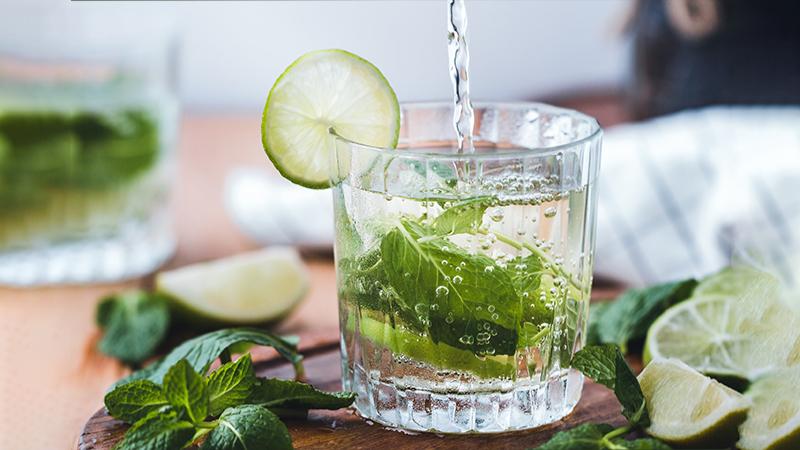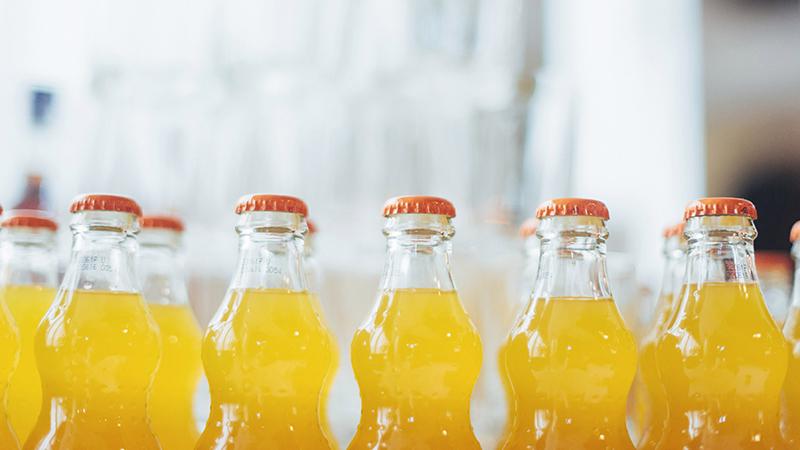Refresh yourself! Measurement technology behind your after-work drinks and snacks
Measurement data behind the production of carbonated soft drinks
You’ve been working hard and it’s time for a break. Fancy a drink? How about something refreshing but with a kick – perhaps a delicious carbonated mixed drink that combines your favorite spirit with water and juice. When you refresh yourself with a chilled mixed drink it’s hard to imagine the amount of work and accurate measurement technology that has gone into ensuring the quality and consistency of your beverage, but each delicious sip has been measured and monitored to ensure the same great taste every time. Prefer a beer, wine, or something non-alcoholic? Quench your thirst and raise a glass to measurement technology, which is once again the hero behind the quality of your liquid refreshment. Cheers!

Maximizing production efficiency and optimizing costs
Sometimes you have the time – not to mention the ingredients – to create the perfect cocktail, but for all other times thank goodness that cans of mixed soft and alcoholic drinks are available. Producers of these tasty tipples have perfected their range of traditional cocktails and innovative flavor combinations, but for each one, they need to ensure the highest levels of quality and consistency in every can.
In-line Brix measurement is the best way to ensure quality and consistency in mixed beverages, not to mention maximizing production efficiency and optimizing costs. A highly automated process is also essential for ensuring the consistency that consumers demand. Juice and carbonated or still water is mixed with an alcoholic drink, with continuous inline process and quality control using a refractometer. This gives operators a real-time overview of concentration measurements, helping to ensure consistent product quality, optimal use of raw materials, reduced waste and filling times, and increased safety, giving us consumers deliciously predictable refreshments every time.

Making beer and wine taste divine - it's all about fermentation
Fermented beverages like wines and beers are made in highly controlled environments, with CO2 levels strictly monitored to ensure the working atmosphere is safe. The fermenting process determines the strength and quality of the final product, so monitoring and control are essential to ensure a high-quality drink with the same great flavor and strength in every bottle. In-line refractometers providing real-time data determine when the required alcohol and sugar levels are reached, then the product can be filtered and bottled. Refractometers also check the quality of the final product, reducing the need for manual sampling and the risk of contamination – and helping to ensure we have a high-quality drink that offers the exact taste we’re looking for.

Free of alcohol, full of flavor - with in-line Brix
Diet soft drinks and flavored waters, known as low-concentration beverages because they have a low sugar content, require high measurement accuracy and repeatability along the production line to ensure the perfect, refreshing final product. Refractometers are used to detect concentration variations and enable advanced process control, reducing waste and optimizing the production process. For drinks with fizz, CO2 is added to the drink during the bottling process, posing a risk for workers if there isn’t adequate ventilation. CO2 sensors ensure safe levels are maintained at all times, for a risk-free bottling process.
When different products are filled from the same filling station, pipelines are cleaned using a clean-in-place (CIP) process to ensure each drink is uncontaminated and tastes exactly as intended. Automated monitoring and control, again using a refractometer, ensures uninterrupted production, improved efficiency, and consistent end-product quality. With measurement technology providing a central role in the quality of your drink, what about those potato chips on the side? Their flavor and crunch are also the results of advanced measurement and monitoring technology – let’s take a look at how the technology brings the taste.

Carbon dioxide monitoring in potato storage, or what makes potato chips so delicious
It’s time for a quick pop quiz while you’re enjoying your drink. What do you think makes potato chips so delicious? Is it A. the salt? B. the crunch? Or is it C. accurate monitoring in the production process? While we don’t often think about the chip’s journey before it reaches our mouth, the taste, quality, consistency, and crunch all come down to accurate monitoring and control in the production process – making C the most complete answer.
In part, we have carbon dioxide (CO2) monitoring technology to thank for the quality of our potato chips. While potatoes are only harvested for a few months each year, chips are produced year-round from both freshly harvested and older potatoes, so to get good chips these older potatoes need to be stored correctly. Potatoes in storage are very sensitive to environmental conditions like temperature, humidity, and CO2 levels; non-optimal environments will affect their fry quality and hence their taste and appearance when processed.
For example, no-one likes to find dark spots on their potato chips and this is a result of elevated levels of CO2 during potato storage. To avoid this and ensure delicious, visually appealing chips, advanced sensors and monitoring technology are used to maintain the perfect environmental conditions for the stored potatoes. Vaisala sensors offer excellent long-term stability and reliability for this task, leading to increased fry quality and greater profitability for potato chip manufacturers.
So there we have it, drinks and snacks. Who knew measurement technology could be so refreshing?
Interested in technology and measurement solutions for the food industry?
Read more in-depth about these yummy topics:


Add new comment